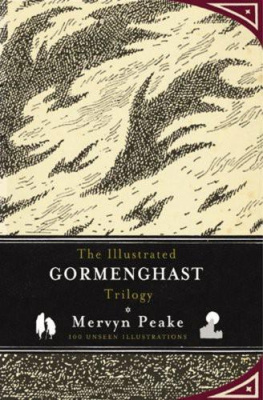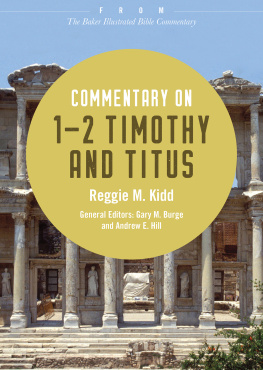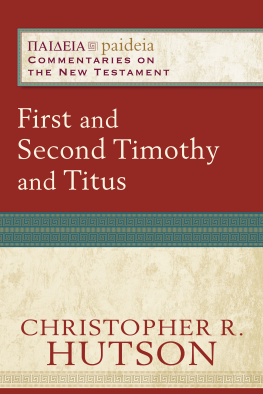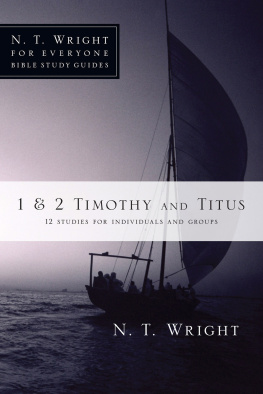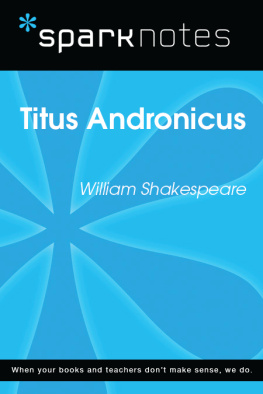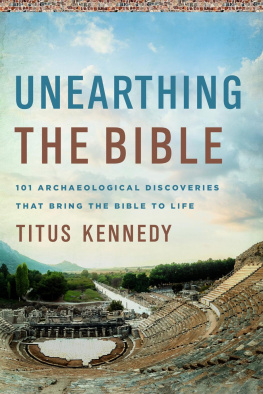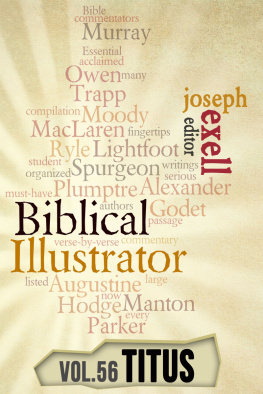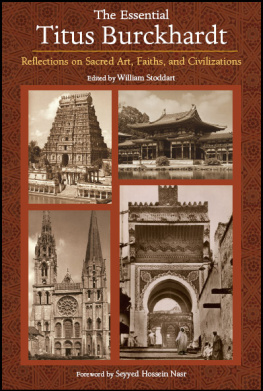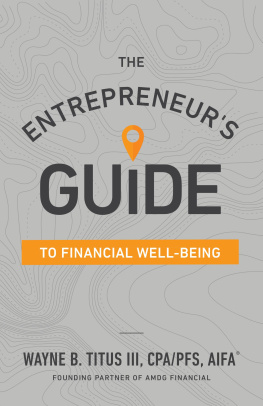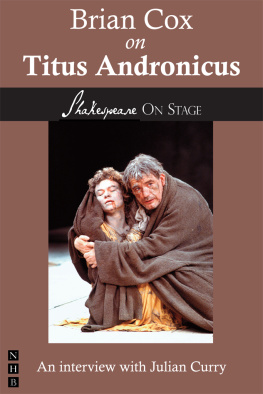Contents
About the Book
Enter the world of Gormenghast. The vast crumbling castle to which the seventy-seventh Earl, Titus Groan, is Lord and heir. Titus is expected to rule this Gothic labyrinth of turrets and dungeons, cloisters and corridors as well as the eccentric and wayward subjects. Things are changing in the castle and Titus must contend with a kingdom about to implode beneath the weight of centuries of intrigue, treachery, manipulation and murder...
About the Author
Mervyn Peake was born in 1911 in Kuling, Central Southern China. He was educated at the Croydon School of Art and the Royal Academy Schools. A gifted book illustrator, he is remembered for Ride a Cock Horse , The Hunting of the Snark , The Rime of The Ancient Mariner , Alices Adventures in Wonderland , Grimms Household Tales and Treasure Island . He is best known for his fictional masterpieces Titus Groan (1946), Gormenghast (1950) and Titus Alone (1959). Mervyn Peake died in 1968.
MERVYN PEAKE
THE ILLUSTRATED
GORMENGHAST
TRILOGY
Titus Groan
Gormenghast
Titus Alone
WITH AN INTRODUCTION BY
China Miville
Introduction
Gormenghast .
With its first word the work declares itself. Establishes its setting and has us abruptly there, in the castle and the stone. There is no slow entry, no rabbit-hole down which to fall, no backless wardrobe, no door in the wall. To open the first book is not to enter but to be already in Peakes astonishing creation.
So taken for granted, indeed, is this totality, this impossible place, that we commence with qualification. Gormenghast, Peake starts, that is, the main massing of the original stone, as if, in response to that opening name, we had interrupted him with a request for clarification. We did not say What is Gormenghast?, but: Gormenghast? Which bit?
It is a sly and brilliant move. Asserting the specificity of a part, he better takes as given the whole of which, of course, we are in awe. This faux matter-of-fact method makes Gormenghast, its Hall of Bright Carvings, its Tower of Flints, its roofscapes, ivy-shaggy walls, its muddy environs and hellish kitchens so much more present and real than if it had been breathlessly explained. From this start, Peake acts as if the totality of his invented place could not be in dispute. The dislocation and fascination we feel, the intoxication, is testimony to the success of his simple certainty. Our wonder is not disbelief but belief, culture-shock at this vast strange place. We submit to this reality, that the book asserts even as it purports not to. Of course Gormenghast is.
Many more than these three books were planned: this was an accidental trilogy. Each of its parts, and each of those unborn others, has and would have had its own quiddity. Gormenghast is not only the title of the midpoint text, but the shared foundation of the three books: yes, even of that last, so-strange, scandalously neglected volume, changeling among changelings. The events it describes all occur in exile from the castle, but Gormenghast, absent presence, could hardly be more there than it is in those pages.
It is a clich of course to insist that this or that work evades classification, is sui generis, or so on. Caution is indicated. But the sheer strangeness of Gormenghast is very real. The work is irreducible to the sum of any of the influences we can find in it. Given its brilliance and the devotion in which it has always been held, one might be surprised at how relatively restrained its overt influence has been. Of course it has always had partisans and those grateful for its shadow, but it seems rather astonishing that it has not been a taproot text, a genre-starter, spawning generations of post-, and, inevitably, sub-Gormenghast fantasies.
The particular flavour of its oddness helps explain this somewhat subterranean history. What faces us is not a radical and violent estrangement so much as a sustained sense of almost -familiarity, of not-quite-familiarity, a strong but wrong recognition. Reading The Gormenghast Trilogy can be like the moment the friend we greet turns and is not our friend at all, but an only vaguely similar stranger.
Some of the themes, for example, are hardly unprecedented: most famously the tension between tradition and change, between the antique rules of Gormenghast and the insurrectionary force of Steerpike, at whose hand so much is shattered. Even here, however, while the problematic may be relatively clear, the sides, the moral axis, are anything but. When Steerpike tugs limbs from a beetle as he says, Equality is the great thing, equality is everything, the conjunction of sadism and radicalism might read as fairly heavy-handed reactionary slander, and his ongoing sociopathic Machiavellianism might seem to underline this view. But is this really the argument? Given the remorseless ludicrousness of the rituals to which Gormenghast and Groan life are subjected and by which they are trapped, the practices pointlessness and powerlessness to improve anything for anybody, the panicky subservience of those in their thrall, the idea that fidelity to tradition or history is celebrated is utterly hollow. There is something at least as bracing as it is horrifying in the transformations Steerpike wreaks. We both take and untake sides.
It is in the names above all, perhaps, that Peakes strategy of simultaneous familiarising and defamiliarising us is at its zenith; Rottcodd, Muzzlehatch, Sourdust, Crabcalf, Gormenghast itself. Such strange and unlikely composites clearly echo Trollope and above all Dickens. But where for them the nomenclaturic agenda worked, often moralistically, to semaphore salient aspects of the named, for Peake no such readings are feasible. This is hardly because he tones down the absurdism. On the contrary, what is merely camp in Dickens becomes grotesquerie in Peake, and splendid for it. But such names are so overburdened with semiotic freight, stagger under such a profusion of meanings, that they end up as opaque as if they had none. Prunesquallor is a glorious and giddying synthesis, and one that sprays images but their portent remains unclear. The doctors character does not help us. He is vivid, comedic, decent, but neither particularly squalid nor overtly fructine. Our minds are perpetual hermeneutic engines, and they do not stop attempting to decode, but their gears cannot get traction.
Not all the names are invented or crossbred, and where they are not, it is their context that makes them strange. Flay, Lord Groans taciturn manservant, and his nemesis, the murderous cook Swelter, are both named with a verb, proper-nouned. In each case the symbolic suitability is arguable, but is neither self-evident, nor, in fact, argued. Swelter has a first name: Abiatha. Its Hebrew meaning, bountiful father, is a discomforting joke, to which Swelter himself draws attention. I am the father of excellence and plenty, he says, and makes the name a chant. Abiatha, he sings, hypnotically. Nomen est omen , but an omen of what, who can quite say?
Paradoxes like this one, of surplus yet shy meanings, abound. Gormenghast feels both claustrophobic and vast. The language is lush and dusty, organic and desiccated.
At the start of the middle volume, Peake introduces us to a boy weve so far known only known as a baby. These opening pages are, uniquely for the series, in the present tense; no matter, then, what other ages Titus passes through, he is also, always, seven a child needing succour. We open with three three-word clauses. A troika of troikas. Titus is seven. And? His confines, Gormenghast. Gormenghast, again and always. Here confines, noun and verb, underscores the oppression of all that stone. And how does Titus live? How has he been raised?

